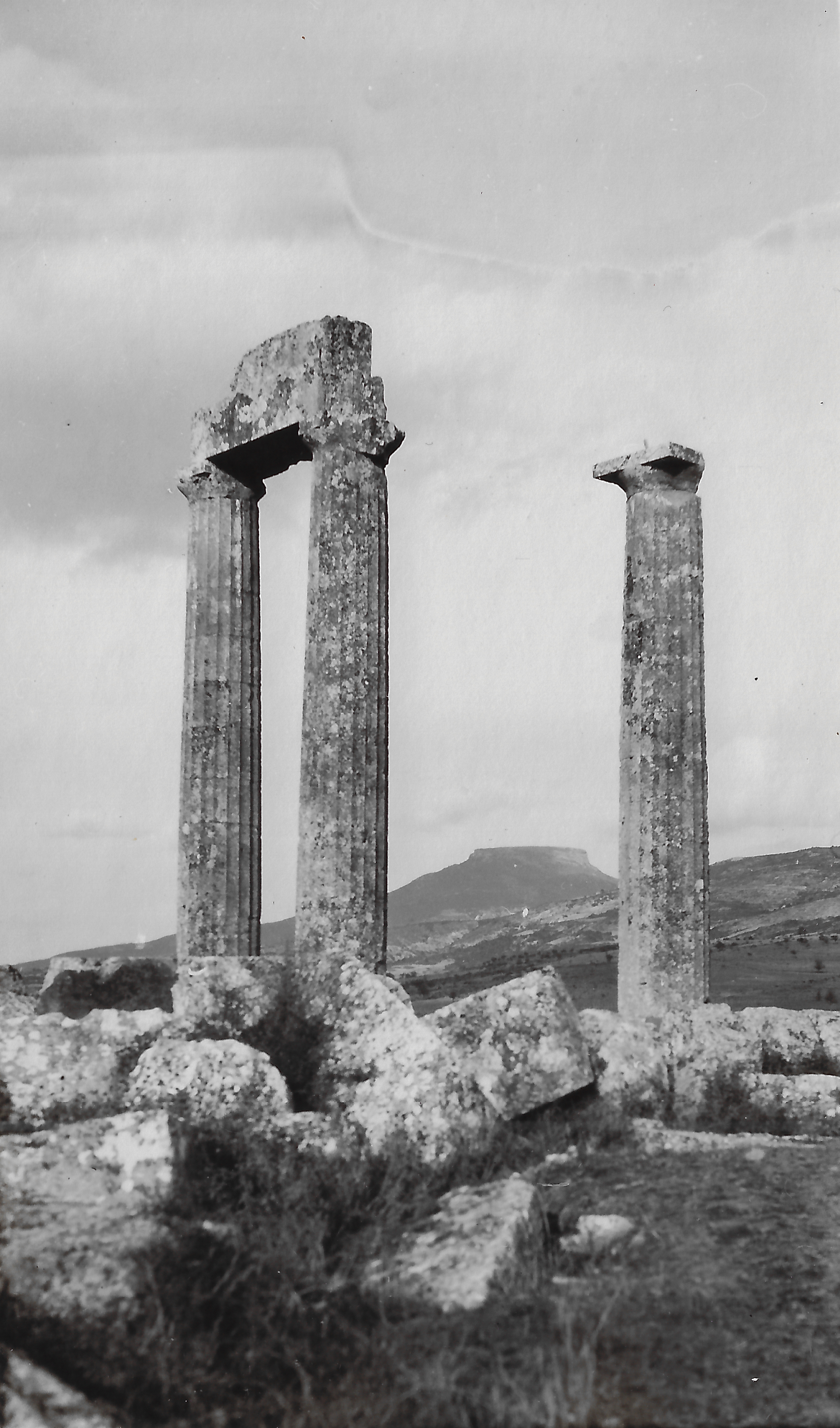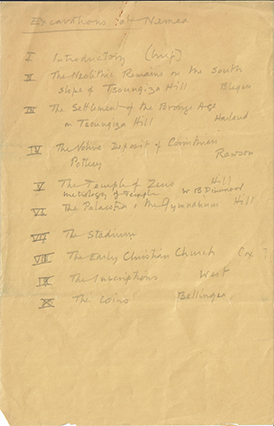The Publication That Was Not
Carl W. Blegen never published his excavations at Nemea beyond his preliminary reports. This was an outlier for a scholar who published what he considered definitive publications of all of his sites. While Palace of Nestor Vol. III was published in 1973 after his death, John L. Caskey stated in the introduction that Blegen approved the final text before he died in 1971.
We know that at some point following the last season, Blegen outlined a publication plan for a book, and a number of drafts of this plan remain. He had assigned himself the Neolithic "cave" which was to be Chapter II, and in addition to typed manuscripts, his initial handwritten one still exists (see the Additional Resources page for this ms). The final version of this manuscript is what Caskey published in 1975.
James P. Harland was to publish the Bronze Age remains from the Tsoungiza hill; according to him, a manuscript was written and illustrations were produced. He gave a talk at the 1927 Annual Meetings of the Archaeological Institute of America (Harland 1928), but aside from his abstract, he did not publish anything else.
Marion Rawson was assigned the votive deposit for Chapter IV, and in addition to photographs, drawings, and Piet de Jong watercolors, she produced a 40-page text (see the Additional Resources page for this ms). Perhaps because of her commitments to Troy, Rawson did not pursue this study any further, but her materials formed the basis for Signe Barfoed’s 2009 thesis and 2017 publication.
Chapters V and VI, covering the Temple of Zeus and the structures identified at the time as the Palaestra and Gymnasium, were to be written by Bert H. Hill, with the assistance of William B. Dinsmoor discussing the metrology of the Temple, and with Lewey T. Lands producing architectural plans. Unlike the previous chapters, Hill does not appear to have produced a manuscript, although correspondence suggests he continued working on understanding the structures for several years and had compiled extensive notes. After Hill’s death in 1958, Charles K. Williams, II reexamined the Temple and the plans made with financial support from UC Classics. He published a volume covering the Temple in 1966, although he credits Hill as the lead author.
Later planned chapters are even more problematic. The Stadium, to be discussed in Chapter VII, was not assigned to anyone when the plan was written, and Chapter VIII, the Early Christian Church has the name "Cox" next to it with a question mark. Dorothy H. Cox was the architect for Blegen's excavations at Prosymna, which overlapped with the dig at Nemea, and she served in the same capacity for the 1932 season at Troy. We cannot know if the question mark suggests that she tentatively agreed to write about the church or whether Blegen intended to ask if she would be willing to write about it.
The inscriptions found were to be examined by fellow UC Classics faculty member Allen B. West, but he apparently did not complete a manuscript before his unexpected death in 1936. Eventually, Donald W. Bradeen, who had been a student of Macolm F. McGregor who in turn had been a student of West, published the inscriptions in 1966.

